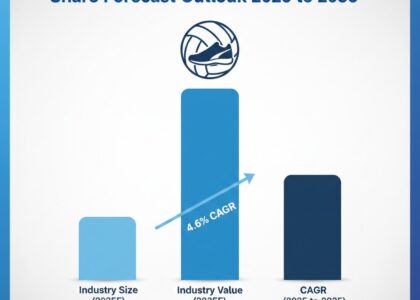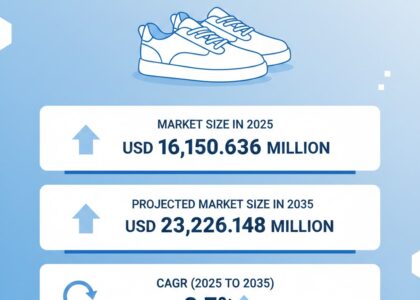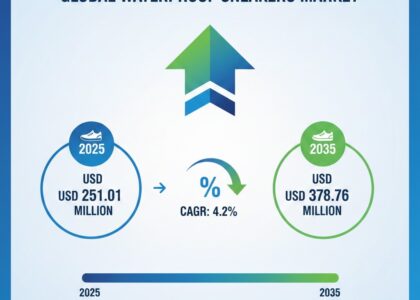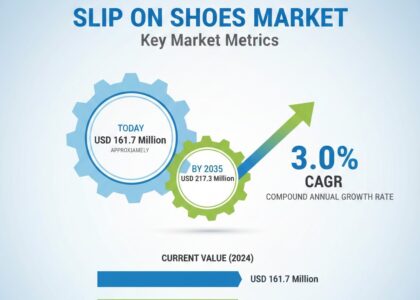In the coming years the digital wound measurement devices products market is expected to reach USD 1,136.9 million by 2025 and is expected to steadily grow at a CAGR of 5.2% to reach USD 1,887.5 million by 2035. In 2024, digital wound measurement devices have generated roughly USD 1,080.7 million in revenues.
The digital wound measurement devices market is gaining momentum as healthcare providers increasingly seek precise, efficient, and non-invasive tools for wound care management. Traditional wound measurement techniques, such as manual rulers or acetate tracing, often fall short in providing accurate data and reproducibility. In contrast, digital wound measurement devices use advanced technologies like 3D imaging, artificial intelligence, and cloud-based platforms to offer precise and consistent assessments. These devices enhance clinical decision-making, streamline documentation, and facilitate better treatment outcomes. With the increasing burden of chronic wounds, including diabetic ulcers, pressure sores, and venous leg ulcers, the demand for reliable wound measurement tools continues to rise.
Get Sample Report: – https://www.futuremarketinsights.com/reports/sample/rep-gb-717
Size & Trends
The digital wound measurement devices market is experiencing robust growth, supported by the rising prevalence of chronic diseases, the aging population, and increasing awareness about advanced wound care solutions. Trends indicate a shift toward integrated systems that combine imaging, analysis, and cloud storage for seamless patient monitoring. Portable and handheld devices are gaining popularity in both hospital and home care settings, as they provide convenience and flexibility. Furthermore, the trend toward personalized healthcare is pushing manufacturers to develop devices that can integrate with electronic health records (EHRs) and telehealth platforms. This digital transformation in wound care is expected to continue, driven by technological innovation and the demand for cost-effective solutions.
Key Highlights
One of the most notable developments in the digital wound measurement devices market is the integration of artificial intelligence and machine learning. These technologies enable real-time wound assessment, predictive analytics, and personalized treatment recommendations. The use of cloud connectivity allows clinicians to store and share wound data securely, ensuring continuity of care across different healthcare providers. Additionally, some devices now offer mobile app compatibility, enabling remote monitoring and patient engagement. These advancements are transforming wound care from a reactive process into a proactive, data-driven approach. The shift from manual to automated systems also significantly reduces the potential for human error, enhancing accuracy and reliability in wound size and depth measurements.
Challenges and Opportunities
Despite its promising growth, the digital wound measurement devices market faces several challenges. One major hurdle is the high cost of advanced devices, which can be a barrier for small clinics and facilities in low- and middle-income countries. Another concern is the lack of standardization in measurement protocols, which may impact data consistency across different settings. Additionally, there are regulatory hurdles that manufacturers must overcome to ensure compliance with healthcare standards and data privacy laws.
On the other hand, these challenges also present opportunities. The increasing investment in healthcare infrastructure, particularly in emerging economies, creates new avenues for market penetration. Partnerships between technology providers and healthcare institutions can help in expanding access to digital wound measurement solutions. Moreover, government initiatives to promote digital health and telemedicine can further accelerate adoption. Continued research and development will likely lead to more affordable and user-friendly devices, making them accessible to a broader segment of the healthcare ecosystem.
Key Benefits for Stakeholders
The digital wound measurement devices market offers significant benefits to various stakeholders across the healthcare continuum. For clinicians, these devices provide accurate and objective data that enhance diagnosis and treatment planning. By automating the wound measurement process, healthcare professionals can save time and focus more on patient care. For healthcare administrators, digital devices contribute to improved workflow efficiency and reduced documentation errors, leading to better compliance and cost savings.
Patients also stand to benefit from more consistent monitoring and timely interventions, which can lead to faster wound healing and reduced hospital stays. For manufacturers, the growing demand for innovative wound care solutions presents lucrative opportunities for product development and market expansion. Investors and stakeholders in digital health also see this market as a high-potential area for sustainable growth, given its alignment with broader trends in healthcare digitization.
Market Share by Geographical Region
The digital wound measurement devices market demonstrates regional variations in adoption and growth. North America leads the market, driven by a well-established healthcare system, high prevalence of chronic wounds, and strong technological infrastructure. The presence of key market players and supportive reimbursement policies further bolster market growth in this region.
Europe follows closely, with countries like Germany, the United Kingdom, and France investing heavily in digital health initiatives. The increasing focus on aging populations and rising healthcare expenditure contribute to market expansion in Europe. Asia-Pacific is emerging as a fast-growing region, propelled by rising healthcare awareness, improving infrastructure, and government support for digital technologies. In countries like China and India, the market is expected to grow rapidly due to a large patient base and increasing investments in healthcare innovation.
Latin America and the Middle East & Africa are also showing promising signs of growth, albeit at a slower pace. These regions are focusing on expanding access to quality healthcare and leveraging digital technologies to address resource constraints. With continued efforts to improve healthcare delivery, these regions hold potential for future growth in the digital wound measurement devices market.
Competitive Outlook
The digital wound measurement devices market is highly competitive, with numerous players vying for market share through innovation, partnerships, and strategic expansions. Companies are investing in research and development to enhance device accuracy, user interface, and integration capabilities. The competitive landscape is characterized by the presence of both established medical device manufacturers and emerging startups offering specialized solutions.
Product differentiation, pricing strategies, and distribution networks play a crucial role in gaining a competitive edge. Mergers and acquisitions are also common strategies adopted by key players to strengthen their market position and expand their global footprint. As customer expectations evolve, companies are increasingly focusing on value-added services such as training, technical support, and software upgrades. The intense competition is expected to drive continuous innovation and improve the overall quality and affordability of digital wound measurement solutions.
Top Companies
Several prominent companies are making significant contributions to the growth and development of the digital wound measurement devices market. These include well-known medical technology firms as well as specialized wound care companies. Their portfolios often feature a range of digital solutions tailored to meet the needs of different healthcare settings, from hospitals and clinics to home care environments.
These top companies are known for their commitment to technological innovation, offering devices with features like real-time image capture, 3D wound mapping, and integration with health IT systems. Many are also expanding their global reach through partnerships with distributors and healthcare institutions. Their ongoing efforts to enhance product functionality and user experience underscore their role in shaping the future of digital wound care.
Explore In-Depth Analysis-Click Here to Access the Report:- https://www.futuremarketinsights.com/reports/digital-wound-measurement-devices-market
Segmentation Outlook
The digital wound measurement devices market can be segmented based on product type, wound type, end user, and geography. By product type, the market includes contact and non-contact digital wound measurement devices, with non-contact devices gaining popularity due to their hygienic and non-invasive nature. Based on wound type, the market is segmented into chronic wounds and acute wounds. Chronic wounds, such as diabetic foot ulcers and pressure ulcers, constitute a major segment due to their increasing prevalence.
In terms of end users, hospitals and clinics hold the largest share, owing to their advanced infrastructure and greater adoption of digital tools. However, home healthcare and long-term care facilities are emerging as important segments, especially with the rise in remote monitoring and telehealth services. Geographically, as mentioned, North America leads the market, followed by Europe and Asia-Pacific.
As healthcare delivery continues to evolve, segmentation strategies will play a critical role in meeting the diverse needs of patients and providers. Companies that tailor their products and services to these segments will be well-positioned to capture growth opportunities in the expanding digital wound measurement devices market.
About Future Market Insights (FMI)
Future Market Insights, Inc. (ESOMAR certified, recipient of the Stevie Award, and a member of the Greater New York Chamber of Commerce) offers profound insights into the driving factors that are boosting demand in the market. FMI stands as the leading global provider of market intelligence, advisory services, consulting, and events for the Packaging, Food and Beverage, Consumer Technology, Healthcare, Industrial, and Chemicals markets. With a vast team of over 400 analysts worldwide, FMI provides global, regional, and local expertise on diverse domains and industry trends across more than 110 countries.
Contact Us:
Future Market Insights Inc.
Christiana Corporate, 200 Continental Drive,
Suite 401, Newark, Delaware – 19713, USA
T: +1-347-918-3531
For Sales Enquiries: sales@futuremarketinsights.com
Website: https://www.futuremarketinsights.com
LinkedIn| Twitter| Blogs | YouTube






